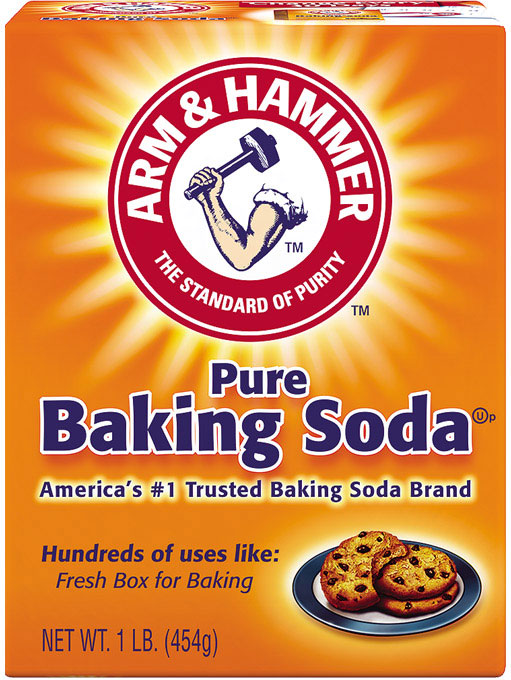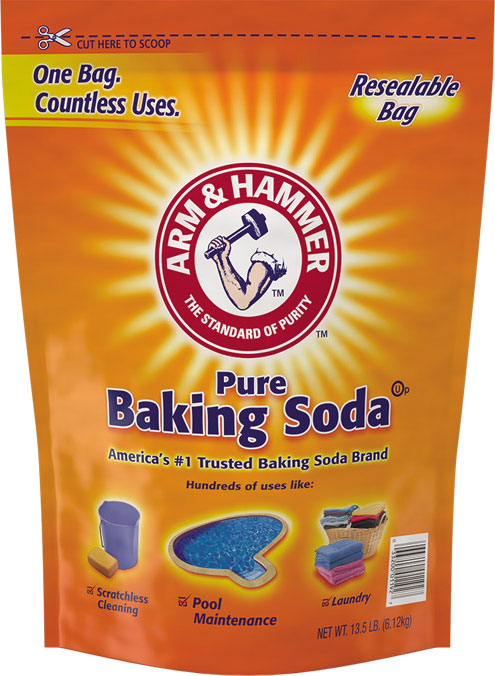Baking Soda to Raise pH and Alkalinity in Pools
Most people know that chlorine is an important chemical in keeping pool water safe for swimming. But adding too much chlorine can lower your pool’s pH as well as its total alkalinity. When alkalinity falls, it is more difficult to maintain a stable pH. Plus, a lower pH and alkalinity of your pool water creates several negative effects, from itchy skin and stinging eyes for swimmers to corrosion of your pool ladders, liner, or other components.
When your water’s alkalinity is too low, any chemicals you add will exponentially affect the pH, creating a condition known as pH bounce. You’ll also need to add more chlorine to get the same sanitizing effect, and your swimmers will complain. Overall, pool water with inadequate alkalinity levels can be frustrating and costly.
Fortunately, there is a simple and cost-effective way to maintain your pool’s alkalinity and pH. You might use it in your cookie recipes or to freshen your fridge. This handy tool for pools is none other than Arm & Hammer baking soda, although you’ll need pounds of it rather than a pinch.
What Does Baking Soda Do For a Pool?
Baking soda, also known as sodium bicarbonate is naturally alkaline, with a pH of 8. When you add baking soda to your pool water, you will raise both the pH and the alkalinity, improving stability and clarity. Many commercial pool products for raising alkalinity utilize baking soda as their main active ingredient. You can maintain your pool for a fraction of the cost by going straight to the source and using pure baking soda in your pool.
Using Baking Soda to Increase Alkalinity
Follow these steps to test and raise your pool’s alkalinity and pH with baking soda.
- Test your pool’s alkalinity daily. Ideally, your pH is between 7.2 and 7.8 and the alkalinity is between 110 and 150 ppm (parts per million). If your alkalinity level is lower, and especially if less than 80 ppm, then you need to raise the pool water alkalinity.
- Purchase baking soda in bulk (available in pouches up to 15 lbs.). You will be adding anywhere from 1.5 lbs. to as much as 8-10 lbs. of baking soda to your pool, depending on how low your alkalinity is.
- Determine amount to add. You’ll need to figure out how much baking soda to add to your pool. Pool chemical measurements are based on 10,000 gallons of water. If your pool is larger or smaller, you’ll need to adjust your math. A rule of thumb is 1.5 lbs. of baking soda per 10,000 gallons of water will raise alkalinity by about 10 ppm. If your pool’s pH tested below 7.2, add 3-4 pounds of baking soda. If you’re new to adding pool chemicals, start by adding only one-half or three-fourths of the recommended amount. After retesting, you can always add more if the level is still low. Otherwise, you could swing too far in the delicate pH balance and need to add an acid.
- Add baking soda to the pool. Sodium bicarbonate is packaged in powder form and can be sprinkled directly into your pool water. Spread in wide arcs across the pool’s surface to avoid dumping it all in one spot. Beware of adding baking soda on a windy day, as the powder can go airborne.
- Wait at least six hours. Let the baking soda dissolve into the water. Turn on your pool’s circulation system to help it disperse.
- Retest and repeat if needed. Between 6 and 24 hours after you added the baking soda, retest your pool’s pH and total alkalinity. If the pH is below 7.2 and the alkalinity below 110 ppm, then repeat these steps.
Correcting Common Pool Problems with Baking Soda
Baking Soda and Green, Blue, or Yellow Algae
If you have algae in your pool, you’ll notice dull green water, slimy walls and pool bottom, and a slippery pool surface. You’ll need to use an algaecide to kill the algae and superchlorinate your pool to clear the water. After this treatment, test your pH and alkalinity and add baking soda to raise alkalinity to at least 100 ppm and pH to between 7.2 and 7.8.
Baking Soda and Pool Corrosion
If you’re noticing corrosion on your pipes or ladders, or pits on your pool liner or tiles, you have very low water alkalinity. Test and add Arm & Hammer baking soda according to the instructions. You will typically need at least 8 lbs. if your levels are low enough to cause corrosion.
Scaling Buildup on Pool Surfaces
Too much calcium and pH as well as high alkalinity levels are culprits for pool scaling. So, too, is hard water. Stop using calcium-based disinfectants and keep your pool’s alkalinity between 80 and 110 ppm. Test your levels and carefully add a pool acid, such as muriatic acid to lower pH to below 7.8. If you go too far, add baking soda sparingly to reach the appropriate levels.
Cloudy Pool Water
If your pool water is cloudy or murky, there could be a number of causes. Check your pool’s filtration system; often the problem lies there. Also test your water’s hardness. If your water is naturally hard, or contains a lot of minerals, you will want to stop using any products containing additional calcium and keep your alkalinity levels lower than 110 ppm (but higher than 80 ppm). To cure cloudy pool water, superchlorination is usually the easiest fix. Be sure to test your pH levels after the hyper-chlorination treatment, and slowly add baking soda to your pool water, if needed, to get to between 7.2 and 7.8. Higher pH levels can lead to cloudiness.
For a more complete guide to pool care and rectifying common issues, see our comprehensive Arm & Hammer Pool Care Guide.
How to Clear a Cloudy Pool with Baking Soda
For a simple method to keep your pool crystal clear, we developed Arm & Hammer Clear Balance™ Pool Maintenance tablets. Our scientists have done the math for you, and 1 to 4 tablets per week, depending on the size of your pool, will keep your water clear all summer. Follow the package directions and dispense through your skimmer or floater. Tablets dissolve in about 15 minutes and will help keep your pool’s pH and alkalinity at proper levels. It’s super easy to use and Clear Balance™ can help prevent pH rebound and other pool problems all season.
Baking Soda for Pools: An Easy Way to Raise pH and Alkalinity
Don’t waste money on commercial alkaline-increasing pool products when you can use baking soda to raise your pool’s pH and alkalinity instead. Follow the procedure above and the guidelines in our Pool Care Guide to correct common pool issues. And use Arm & Hammer Clear Balance™ Pool Maintenance tablets to keep a clear, clean, safe pool without a lot of hassle.
Resources
https://www.swimuniversity.com/household-products-clean-pool/
https://www.hunker.com/13415244/how-to-lower-the-ph-in-a-swimming-pool-with-baking-soda
https://www.armandhammer.com/-/media/aah/feature/articles/baking-soda/baking-soda-articles/pool-owners-guide.pdf
https://www.armandhammer.com/articles/diy-pool-maintenance-tips
https://www.armandhammer.com/baking-soda/pool-maintenance/pool-maintenance/clear-balance-pool-maintenance-tablets
http://poolforthought.com/raising-pool-alkalinity/




